The symbols of hate and far-right extremism on display in pro-Trump Capitol siege
As a pro-Trump mob stormed the U.S. Capitol last Wednesday, symbols of white supremacy and extremist right-wing militias were displayed by rioters on flags, banners and clothing scattered in a sea of American flags, pro-Trump banners and campaign memorabilia.
According to experts who study far-right movements in the U.S., the images illuminated some of the beliefs held by some “extremist” individuals and groups who embraced President Donald Trump's repeated false claims that the election was stolen from him and responded to his call for “strong” action as he urged supporters to march to the Capitol.
Larry Rosenthal, chair and lead researcher of the Berkeley Center for Right-Wing Studies, said that the “Stop the Steal” mob was generally made up of two groups -- right-wing populists, whom he described as part of Trump’s most faithful “rally-goers.” Some of them did not engage in violence and were "not prepared for insurrection." There were also right-wing militia groups that represent two overlapping “currents” of the far right movement: white nationalism and anti-government.
These two themes were also reflected in the mix of symbology scattered in the crowd – far-right symbols that included symbols of the Confederacy, Nazism, white supremacy, and anarchy, experts said.
Cynthia Miller-Idriss, a sociology professor at American University who studies extremism and far-right movements, said that along with some “violent extremists from within the MAGA or Trump supporting group," the mob included “a toxic mix” of groups from across “the far-right spectrum.”
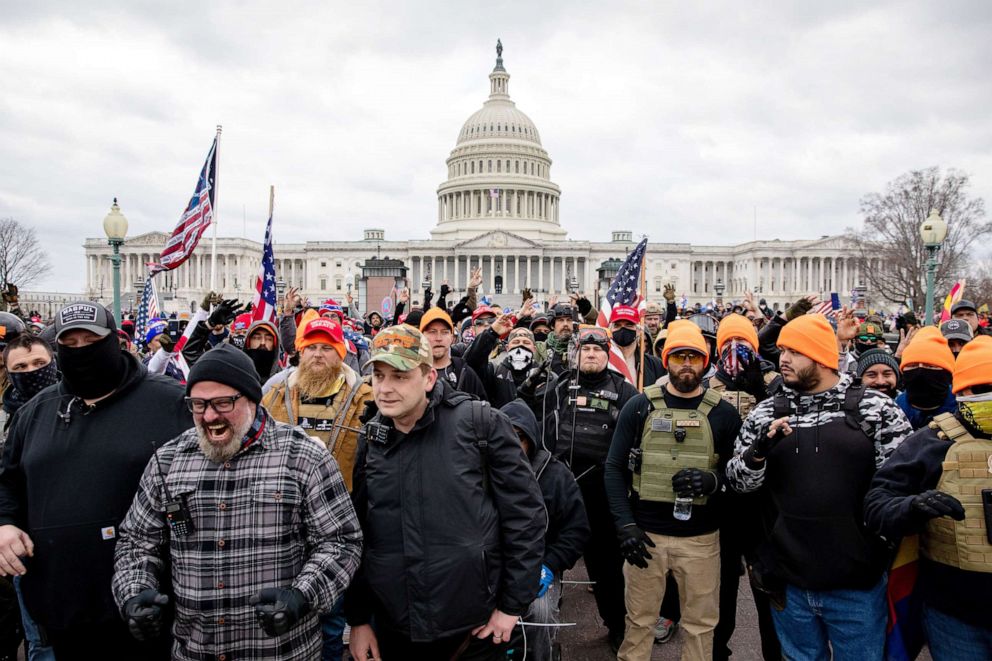
Self-described members of the Proud Boys, a group that is characterized by the FBI as a far-right extremist group with ties to white nationalism, were present. According to the New York Times, some were pictured outside the Capitol wearing orange hats.
Unidentified men in the crowd were also pictured making the "OK" hand gesture, which according to the Anti-Defamation League, has been used since 2017 as a symbol of "white power."

Some who stormed the Capitol wore clothing displaying “Q” symbols, including shirts displaying a bald eagle and a large "Q" letter topped with the words, "trust the plan."
The “Q” symbol represents QAnon, a series of disproven conspiracy theories centered on the baseless belief that Trump is waging a secret campaign against “deep state” enemies, including devil-worshipping Democrats and a child sex-trafficking ring run by satanic pedophiles and cannibals. Many top Democrats, party supporters, Hollywood stars and Trump critics have been slandered by QAnon's members with false and heinous allegations.
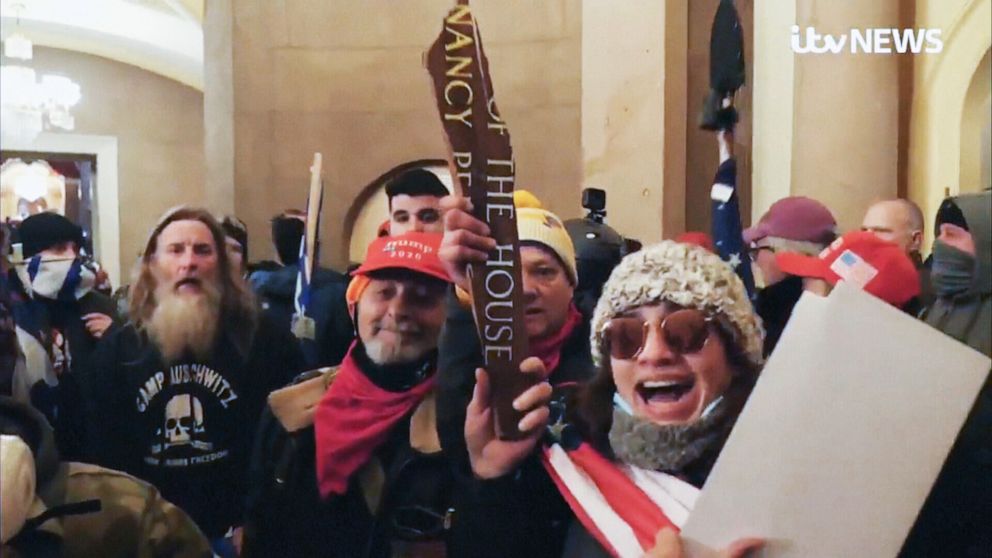
Other symbols captured by the media displayed overt Nazi and white supremacist signs, including a sweatshirt worn by a rioter that displayed the words "Camp Auschwitz" and read "work brings freedom," which according to Miller-Idriss is a translation of the German Nazi slogan, "Arbeit macht frei" that appeared on the entrance of the Auschwitz concentration camp.
She said that the shirt bears “a virulently anti-Semitic, and white supremacist extremist” symbol that is “making light of the Holocaust.” The man wearing the shirt, Robert Keith Packer, was arrested for unlawful entry in the Capitol incident. He has not yet entered a plea in court.

There was also a noose posted across the U.S. Capitol, overlooking the crowd -- a chilling image that was widely circulated.
The noose symbolizes the threat against racial minorities and “the history of lynching in the U.S.,” Miller-Idriss said, as well as the white supremacist and extremist “fantasies” of “the day of the rope” -- the notion that “traitors are going to be hung in the streets,” which in this case could be interpreted as those who betrayed Trump, she added.
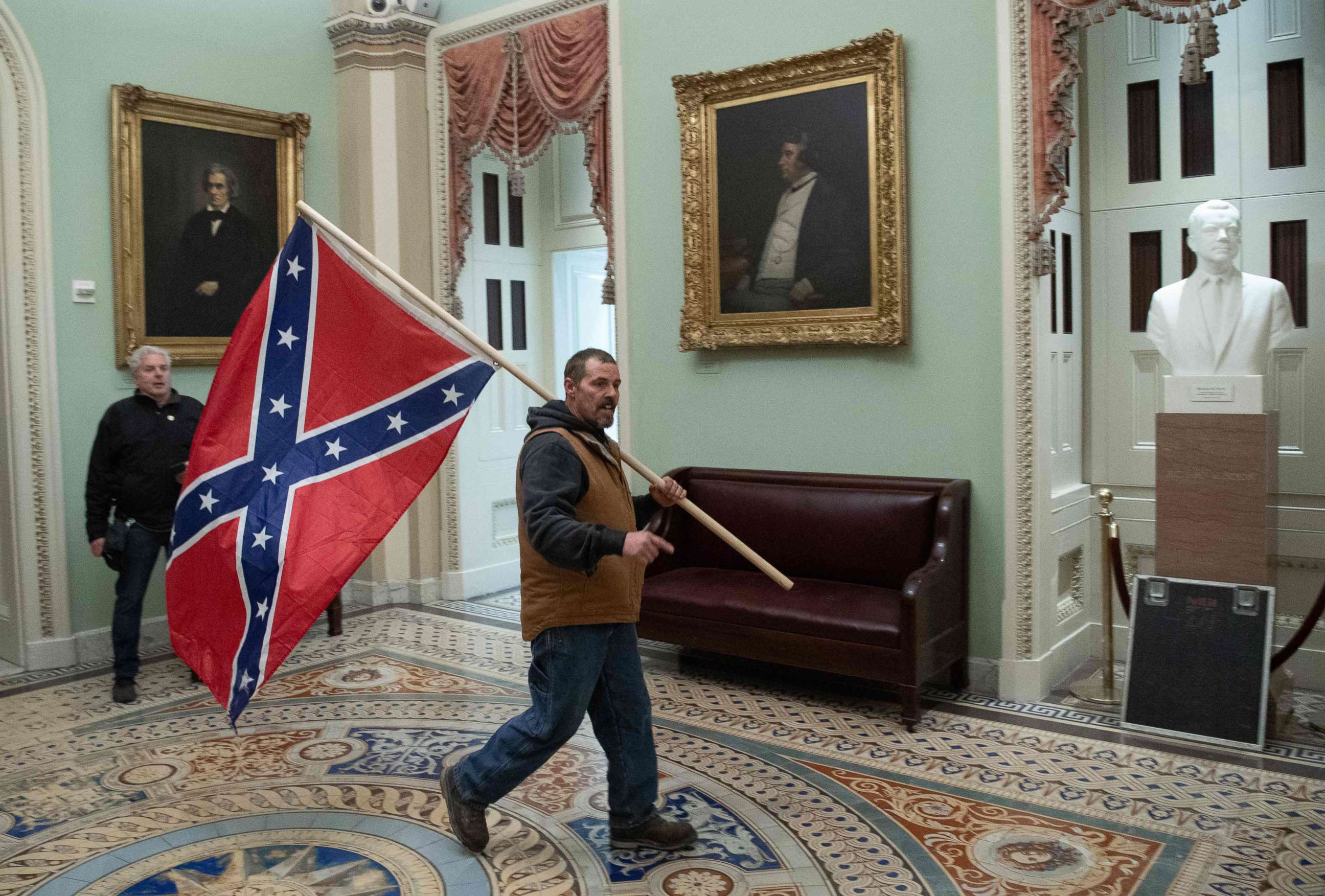
Symbols of the Confederacy were also common, and in a photo that went viral, a man carried a large Confederate flag inside the halls of Congress as he walked past a portrait of Massachusetts Senator and abolitionist Charles Sumner and Vice President John Calhoun, a slaveholder.
Miller-Idriss said that while the Confederate flag “carries a lot of different symbolic weight,” it can be seen as “a white supremacist symbol as somebody who's defending slavery,” as well as “a call for a second Civil War.”
Anti-government symbols included “civil war” t-shirts displaying the Trump “Make America Great Again” logos and the date of the siege – a message that appeared to call for an overthrow of the government, according to experts.
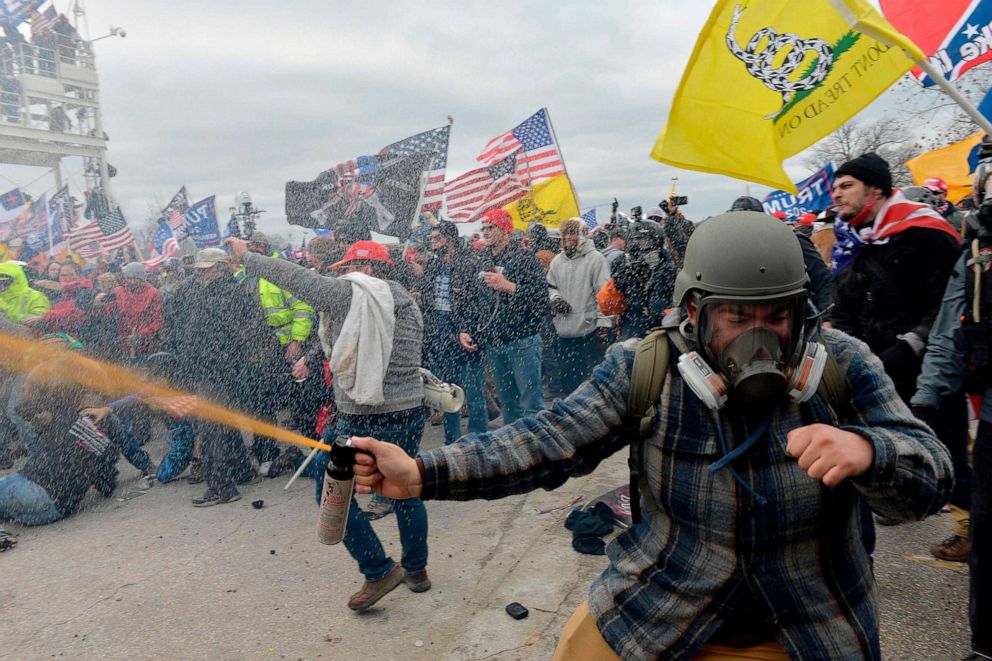
Gadsden flags -- yellow American flags that date back to 1778 displaying a rattlesnake and the words, “Don’t tread on me," were also spotted in the crowd. They have been embraced by various anti-government advocates in recent years.
According to Paul Bruski, a graphic design scholar at Iowa State University, the original meaning of the Gadsden flag -- which has been adopted by various Libertarian groups, the Tea Party and some gun rights groups -- has changed over time.
“Gone is the original intent to unite the states to fight an outside oppressor,” he writes. “Instead, for those who fly it today, the government is the oppressor.”
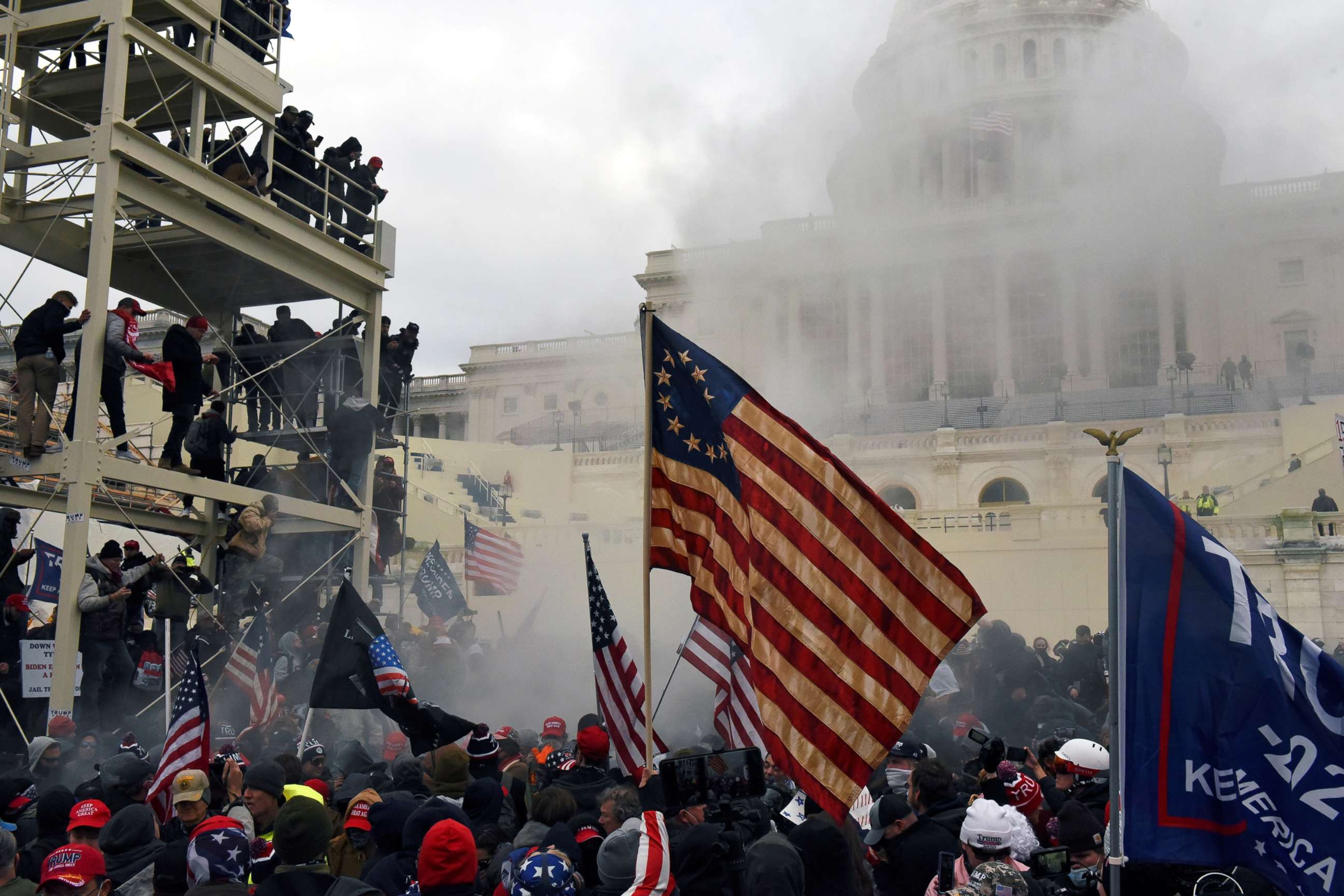
According to experts, extremist calls to revolution and an overthrow of the government were also reflected in symbols of the Revolutionary War, including the 13-star Betsy Ross flag representing the 13 colonies and some colonial and Revolutionary War costumes.
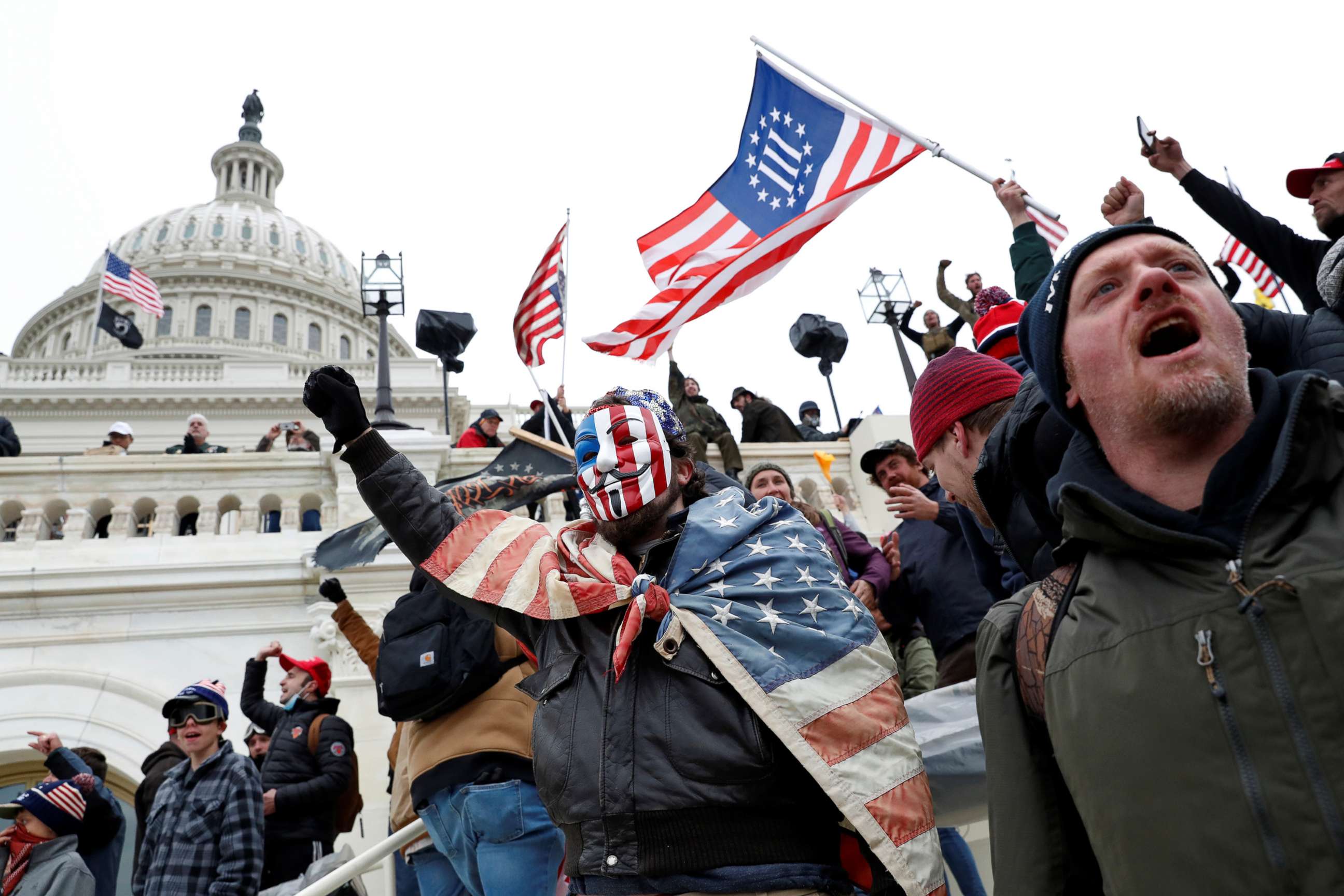
Some displayed what is known as the “three percenters flag” -- a symbol of a far-right American and Canadian anti-government militia group.
Miller-Idriss said that the group is founded on the “myth” that “it only took 3 percent of the American people to revolt against the British," and in this context is a "signal that a small number of so-called patriots" all you need to have a "successful revolution."
Some rioters who violently stormed the Capitol were easily identified by reporters, law enforcement and friends and family. Besides being unmasked, many shared videos and photos of their participation in the siege on social media, which led some to lose jobs and even face federal charges.
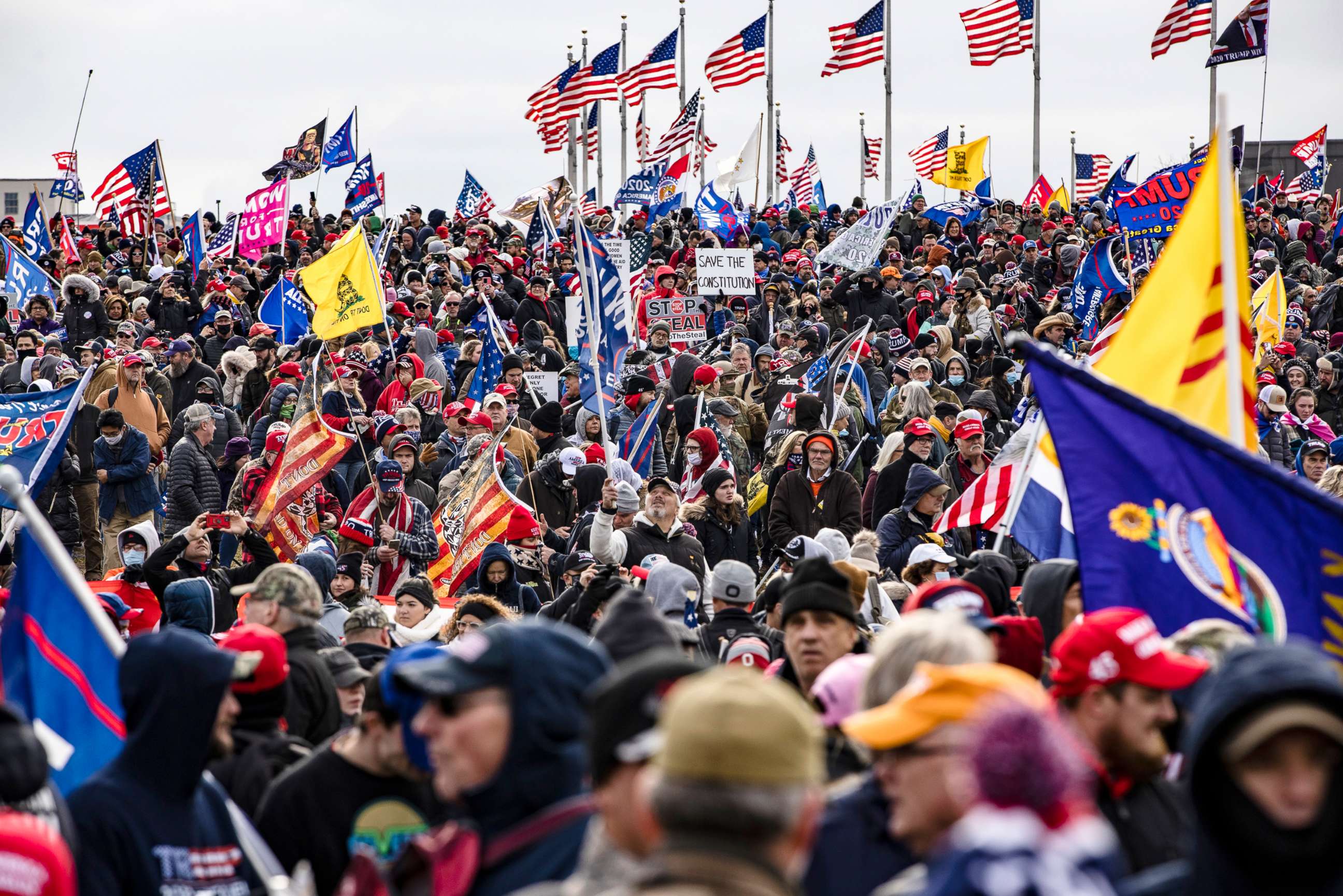
According to Rosenthal, extremist and white supremacist groups existed on the fringes of American politics in recent decades, but in the age of Trump, some have been emboldened by finding a place again in national politics through the president.
Trump has frequently failed to condemn white supremacists and far-right groups espousing disproven conspiracy theories or has appeared to do so begrudgingly when pressed by reporters.
“[They have been] electrified by no longer being stuck in little corners of America. Suddenly, they are center stage because a guy running for president likes them, talks their language," Rosenthal said, adding that they feel "we don’t have to worry because (Trump's) running the show.”
Ahead of the Capitol siege, Trump addressed the group at a rally as the Senate prepared to vote to certify Joe Biden as the winner of the 2020 election.
He told his supporters that a strong response is necessary to “take back our country.” Shortly after, the pro-Trump mob breached the U.S. Capitol and clashed with law enforcement, eventually resulting in the death of five people.
As bipartisan pressure mounted on Trump to respond, he called on rioters to be “peaceful” and “go home” but did so while repeating his false claim that the election was stolen from him and told the mob, “we love you.” A week later, the president has publicly refused any responsibility for his rhetoric and when pressed on Tuesday, he claimed his comments were “totally appropriate.”
Hours after he was impeached for the second time by the House for "incitement of insurrection" for his role in the Jan. 6 attack on the U.S. Capitol, Trump condemned the violence in a video message released by the White House.
He said that “mob violence goes against everything I believe in,” adding “no true supporter of mine could ever endorse political violence.”
ABC News' Phaedra Singelis contributed to this report.




